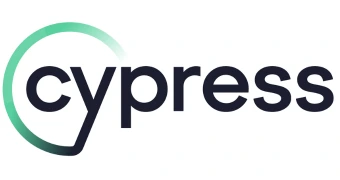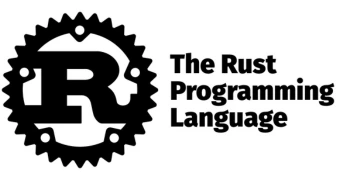Introduction to Python

Introduction of Python Language
Python is a popular high-level, open source programming language used in automation, big data, Data Science, and web development. It's flexible, powerful, and object-oriented. Python offers numerous job opportunities and is considered the next big thing in the IT industry. Happy Trainings provides a comprehensive Python Course to master fundamentals, scripting, file operations, and practical applications through hands-on training and projects.
Python is a general-purpose programming language that is becoming increasingly popular in a wide range of fields, including artificial intelligence, neural networks, machine learning, natural language processing, cloud computing, and other advanced fields of computer science. One of the key reasons for Python's popularity is its reliability. Python code is typically very easy to read and understand, which makes it less likely to contain errors. Additionally, Python has a large and active community of developers who are constantly working to improve the language and its libraries. This makes it a very reliable choice for developing complex applications.
Here are some of the specific reasons why Python is gaining popularity in these fields:
- Artificial intelligence: Python is a popular choice for developing artificial intelligence (AI) applications because it is easy to learn and use, and it has a large library of AI-related tools and libraries.
- Neural networks: Python is also a popular choice for developing neural networks, which are a type of machine learning algorithm that can be used for a variety of tasks, such as image classification, natural language processing, and speech recognition.
- Machine learning: Python is a general-purpose programming language that is also well-suited for machine learning applications. It has a large library of machine learning tools and libraries, and it is easy to learn and use.
- Natural language processing: Python is a popular choice for natural language processing (NLP) applications, which are used to analyze and process human language. Python has a large library of NLP tools and libraries, and it is easy to learn and use.
- Cloud computing: Python is also a popular choice for cloud computing applications. It is easy to deploy Python applications on cloud platforms, and it can be used to build a wide variety of cloud-based applications.
Overall, Python is a powerful and versatile programming language that is gaining popularity in a wide range of fields. Its reliability, ease of use, and large library of tools and libraries make it a great choice for developing complex applications.
How to Install Python
To install Python on your computer, you can follow these steps:
-
Visit the official Python website: Go to the Python website at https://www.python.org/.
-
Download the Python installer: Click on the "Downloads" tab, and you will see the available Python versions. Choose the version that suits your needs. As of my knowledge cutoff in September 2021, Python 3.9 was the latest stable version. However, please note that there may be newer versions available now. Select the appropriate installer for your operating system. For example, if you're using Windows, choose the Windows installer.
-
Run the installer: Once the installer is downloaded, locate the file and double-click on it to run it. You may need administrative privileges to install Python on your system.
-
Customize the installation (optional): During the installation process, you will have the option to customize the installation settings. You can choose the installation location, add Python to your system's PATH (recommended), and select additional features.
-
Start the installation: Click on the "Install Now" button to begin the installation process. The installer will copy the necessary files to your computer.
-
Verify the installation (optional): After the installation is complete, you can verify if Python is installed correctly. Open a command prompt or terminal window and type
python --version. If Python is installed properly, it will display the installed version.
Congratulations! You have successfully installed Python on your computer. You can now start writing and running Python code.
FAQ's
What is Python?
- Python is a general-purpose programming language that is used for a wide variety of tasks, including web development, data science, machine learning, and artificial intelligence. It is a popular choice for beginners because it is easy to learn and has a large community of users and developers.
Why should I learn Python?
- There are many reasons to learn Python. It is a versatile language that can be used for a wide variety of tasks. It is also a popular language for beginners, so there are many resources available to help you learn. Additionally, Python is a powerful language that can be used to create complex applications.
How do I install Python?
- Python is available for Windows, macOS, and Linux. You can download the latest version of Python from the Python website. Once you have downloaded the installer, run it to install Python on your computer.
Where can I find more information about Python?
- There are many resources available to help you learn Python. The Python website has a comprehensive documentation, tutorials, and a community forum. There are also many books and online courses available.
What are the advantages of using Python?
- Python offers numerous advantages, including its easy-to-read syntax, extensive standard library, cross-platform compatibility, large developer community, and vast ecosystem of third-party libraries.
What are Python's data types?
- Python supports various built-in data types, including integers, floating-point numbers, strings, lists, tuples, dictionaries, sets, and more. Additionally, Python allows you to define custom data types using classes.
How do I install third-party libraries in Python?
- You can install third-party libraries using the package manager called pip, which is bundled with Python. For example, to install a library called "requests," you would run
pip install requestsin the command prompt or terminal.
Can I use Python for web development?
- Yes, Python can be used for web development. Frameworks like Django and Flask provide a solid foundation for building web applications, while libraries like BeautifulSoup and Selenium are useful for web scraping and automation tasks.
Is Python suitable for machine learning and data science?
- Absolutely! Python has become one of the most popular languages for machine learning and data science. Libraries such as NumPy, Pandas, Matplotlib, and scikit-learn provide powerful tools for data manipulation, analysis, visualization, and building machine learning models.
What is the difference between Python 2 and Python 3?
- Python 2 and Python 3 are two major versions of Python. Python 3 introduced several backward-incompatible changes and improvements over Python 2, including better Unicode support, cleaner syntax, and enhanced libraries. Python 2 is no longer maintained as of January 1, 2020, so it is recommended to use Python 3 for new projects.
Where can I find resources to learn Python?
There are many resources available to learn Python, including online tutorials, documentation, books, and video courses. Some popular platforms for learning Python include Codecademy, Coursera, Udemy, and the official Python website (https://www.python.org).
REGISTER NOW
Please let us know your requirements



